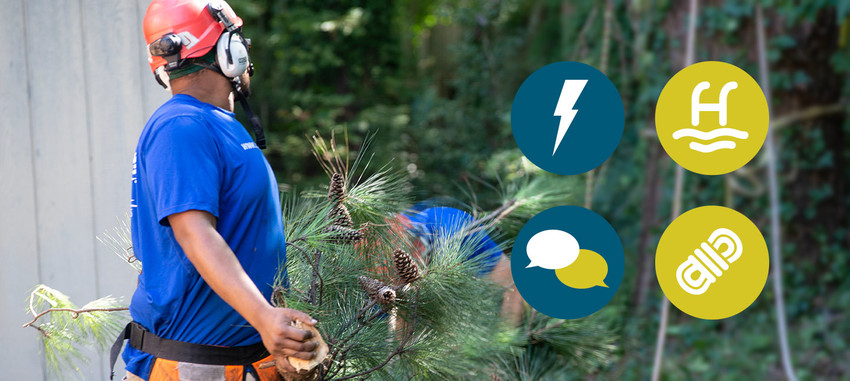TFTC #16: Ground Support for Tree Care
North American Training Solutions May 27th 2020A climber is only as good as his or her ground crew. Like so many things in life, safe, efficient tree care is a team event. Like all teams, every member must be on board with the game plan and willing to execute it, or possibly change it, if necessary. The key to safe ground operations while workers are aloft lie in two basic things: planning and communication.
Planning starts with the sale of the job. Arborist representatives need to have a good grounding in safety. They need to look at the job not from a “how long will it take it to get completed” mindset, but rather a “how are we going to do it safely and efficiently” perspective.
Discuss with the clients not only the arboricultural concerns, but logistical ones as well. This makes it all the easier for the crew to develop a plan. If a lawn must be crossed for aerial lift access, for example, the arborist representative is the best one to address this from the start of the bidding process. Many client concerns can be addressed and compensated for simply by thinking about the best way to complete a job and making sure this coincides with the client’s wants, needs and concerns.
Once the crew arrives, the plan must continue. Clear work objectives should be outlined on the work order. The whole crew should understand the scope of the work and the timeframe it is to be completed in. Then, a thorough site inspection and pre-work briefing should be held, involving the whole crew. A useful acronym to start with is H.O.P.E.
H.O.P.E.
The “H” stands for Hazards. Look for things that could injure or kill the crew, pedestrians or homeowners during the scheduled work. Develop a plan and abatement strategies. An example of a hazard is electrical conductors.
“O” stands for Obstacles. Identify what is in the way. Can it be moved? How will the crew aloft and on the ground work around it? An example of an obstacle is a house or swimming pool.
“P” stands for Plan. Plan your work then work your plan. Discuss options and come to consensus. Remember the whole crew is on the team. Make sure work zones are defined and access is restricted to those who need to be there.
Designate drop zones for aerial debris to land and make sure everyone is aware of where and when they will be used. Develop and use a command and response system. This is when a climber calls down to the ground with a command like “stand clear.” the ground crew would then respond with an “all clear” before any debris was dropped or lowered.
Keep your command clear, concise and readily understandable, by the crew and the general public. Develop a plan for times when audible communication may not be an option as well.
“E” stands for Equipment. Make sure the crew has the necessary equipment to complete the job. Further assure they know how to properly use it safely and efficiently. The worst most unsafe work can be completed with brand new, top of the line equipment.
Safety for ground workers and climbers is a team effort. It begins as the job is sold and continues until the last piece of saw dust is swept away. Plan your actions, communicate them clearly and do not be afraid to adjust your plan as necessary.

